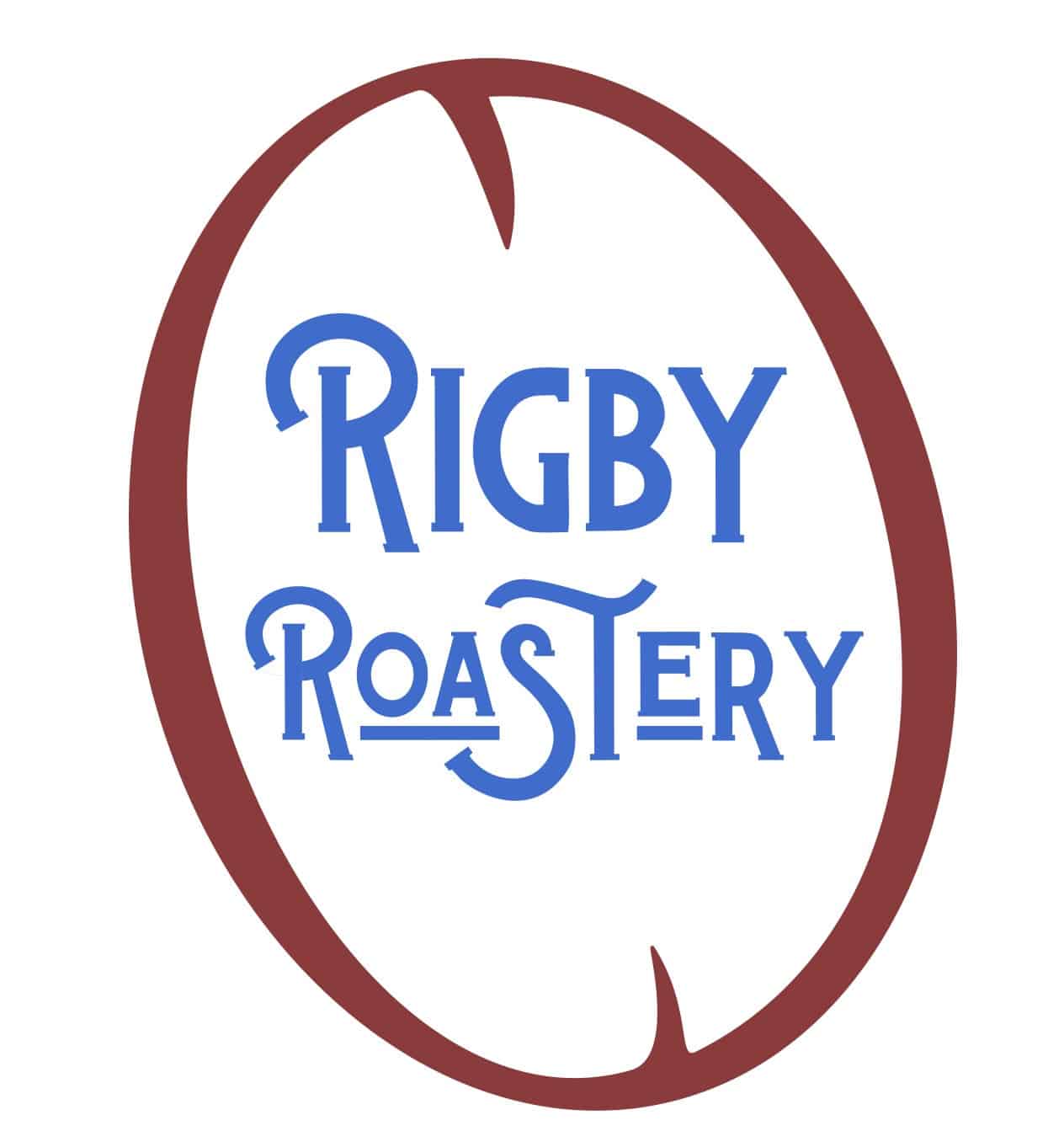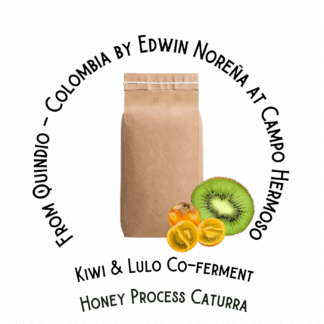Co fermented coffee Kiwi & Lulo
Price range: $26.00 through $240.00
We taste Kiwi, Botanicals, & Green Apple Candy. Try it today!
This coffee is complex, versatile, and utterly memorable. This rare experimental lot is amazing for literally any brew method.
co fermented coffee. Sometimes called co ferment coffee, co-fermented coffee, or co-ferment coffee. Also, Co-fermentation coffee.
Sweet, Tangy, and Herbaceous
Carbonic maceration, kiwi and lulo co-ferment, honey process caturra. This is an inventive and experimental processing technique. The flavor is juicy and bright. This coffee is not subtle. Green fruits, botanicals, and malic acidity explode in the cup. Mint, Hemp, and Hops flowers. Hints of herbs like oregano and lemongrass mingle alongside ripe fruits.
Edwin Noreña produces these magical micro-lots on his famous farm, Finca Campo Hermoso. Experimenting with the new co-ferment coffees that come from his farm elates us.
Inspired and innovative processing is gaining an audience. It’s extravagant. Cedar. Pine. Green apple jolly rancher candy. There’s a brilliance to the chaos. Coarsen the grind. Maybe add a few grams of bypass water. To sum it up, play with the length of this coffee to uncover fun new flavors.
Experimental Processing
We have become more involved lately in trying out new co-fermented processes that farmers do. When these detail oriented and futuristic process styles emerge out of a farmer’s interest in a coffee’s inherent qualities, we can’t help but bring them to our customers. Let’s go on an adventure.
Obviously, there’s a lot to talk about here. The smell of the beans is intense. Robust aromas fill the space in a matter of seconds. This is a testament to the boundless potential that is possible with infusions and co-fermentations.
The spicy flowers are there. Lots of geranium, a little hibiscus, and some lavender grab you along the way. Rich in complexity. This is a sugary coffee and it has a tart, herbaceous tonic water mixed drink thing happening.
Deeply fruited as well. Honeydew melon, candied lime. Coffee maximalism is no new thing from Edwin, but this one is baffling. It’s head-turning and over the top like a well-performed improvisational jazz.
Most of all, it is full of flavors and aromas that remind us of the color green. A fresh rain on the forest in the morning. Spicy flowers and tropical fruits.
All the classic flavors of Colombian coffee make up the bottom of a cup topped with a rich sweetness. It’s a little boozy. The bite on the tongue of a sparkling wine and white label Chimay. It’s all swirling under the brightness of cardamom and rosemary spice notes.
In conclusion, white spices and savory herbs like marjoram and thyme alongside ripe pineapple. Classic sour candy and sweet tart becomes a top note after the coffee cools down.
Brewing the Beans
This is a memory making brew rich in nostalgic qualities. It is elegant and futuristic. It reminds us of the utterly complex Sudan Rume we’ve had in the past from Finca La Riviera.
This coffee is excellent cold brewed or flash chilled. We use it in mocktails as a replacement for apertif and amari.
We brewed it in the Chemex for a sweet sour apple candy cup. Coarse grinds worked best as this coffee can be a little overwhelming when the TDS high… unless you’re mixing it with cream. Or even better, over ice cream.
It’s definitely got a bold hemp flower aroma. Indeed, this one makes people smile when offered as a wacky, out of this world espresso. Balanced against no lack of surprises, it fascinates us with every new shot we pull. Lastly, we recommend 18.5 grams in and 41 grams out at about 28-30 seconds for an all-over-the-place shot, tangy acidity, and a creamy body.
About Caturra Coffee
Firstly, a natural mutation of a well known Coffea Arabica coffee from the Reunion Islands called Bourbon.
Why grow it? Firstly, it produces an above average cup quality. Secondly, it has wide branch seperation and broad shape. So it produces a lot of cherries. This led the Brazilian Agronomic Institute of Campinas (IAC) to select and maintain it.
Discovery of the coffee was made between 1915 and 1918 in Minas Gerais, Brazil. Abundantly producing Caturra in countries across Central and South America like Costa Rica, Colombia, Brazil, Guatemala, and Nicaragua is normal.
It is a short variety with a diminutive stature when comparing it to other coffee plants. Regions with rich, fertile soil and yearly rainfall of 110 or more inches do well with Caturra. If Caturra is grown at at least 1200-2000 MASL it has an elevated acidity, flavor, and aroma. This is according 2017 study published in Ciência Rural by Liliana Estrella Gamonal.
About the Processing
- Firstly, they pick the caturra cherries using a brix meter to selectively harvest only the most perfectly ripe fruit. They sort them to remove any defective cherries.
- Secondly, they perform a whole cherry 72 hour carbonic maceration in sealed tanks.
- Thirdly, the coffee is pulped and set for secondary fermentation for 96 hours, backslopped with the mossto from the first fermentation.
- This mossto is infused with kiwis and lulos and is recirculated every twenty-four hours for a total of four days in secondary maceration.
- Finally, this heavily fermented “honey” coffee is then taken to raised beds to dry for 22 days, followed by a controlled warehouse humidity stabilization for an additional 8 days.
For more delicious coffee beans check out the fun and fruity anaerobic natural process Costa Rican Coffee from Don Eli.
This is a co fermented coffee. Sometimes called co ferment coffee, co-fermented coffee, or co-ferment coffee. Also, Co-fermentation coffee.

